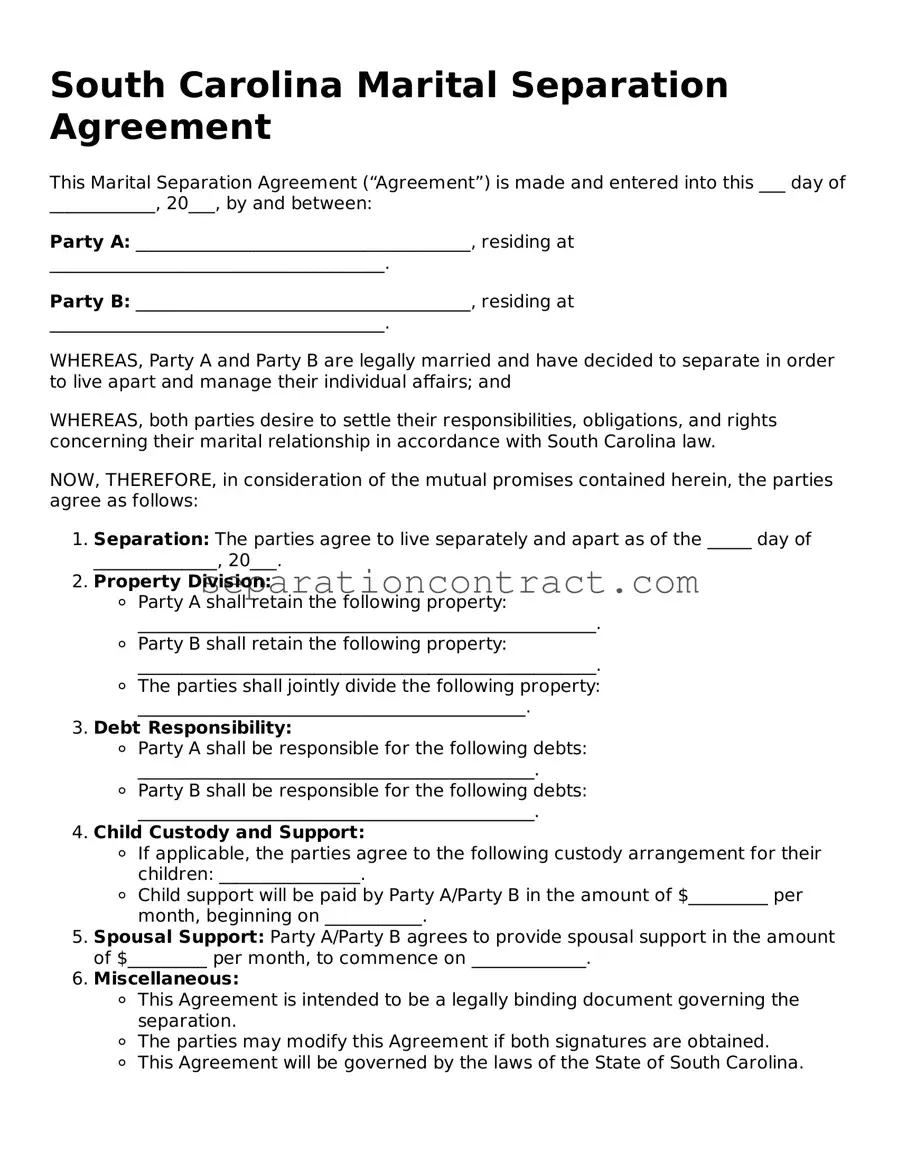Filling out a South Carolina Marital Separation Agreement form can be a daunting task. Many people approach it with good intentions but end up making mistakes that can complicate their separation process. One common error is not being thorough with personal information. It’s crucial to ensure that all names, addresses, and contact details are accurate. Missing or incorrect information can lead to delays or even legal issues down the line.
Another frequent mistake is overlooking the importance of asset division. Couples often assume they know what belongs to whom, but without a clear outline, disputes can arise later. It’s essential to list all assets and liabilities, from bank accounts to debts, and agree on how they will be divided. Failing to do this can lead to misunderstandings and resentment.
Many individuals also neglect to consider child custody and support arrangements. Even if both parties believe they have a mutual understanding, it’s vital to document these agreements formally. This ensures that both parents are on the same page and reduces the likelihood of conflicts in the future. Not addressing these issues can lead to confusion and heartache for everyone involved.
Another mistake involves not seeking legal advice. While it may seem tempting to handle everything independently, consulting with a professional can provide valuable insights. They can help clarify your rights and obligations, ensuring that you don’t overlook important details. Relying solely on online resources can sometimes lead to misinformation.
People often forget to review the agreement carefully before signing. Rushing through the process can lead to missed errors or misunderstandings. Taking the time to read through the entire document ensures that both parties fully understand the terms and conditions. It’s always better to catch mistakes before they become binding.
In some cases, individuals fail to consider future changes in circumstances. Life can be unpredictable, and what works today may not be suitable tomorrow. It’s wise to include provisions for modifications to the agreement if significant life changes occur, such as job loss or relocation. This foresight can save a lot of trouble later on.
Another common oversight is not discussing the agreement openly with one’s spouse. Communication is key in any relationship, especially during a separation. Avoiding conversations about the agreement can lead to assumptions and misunderstandings. Both parties should feel comfortable discussing their needs and concerns to create a fair agreement.
Many people also underestimate the importance of notarization. While it may seem like a minor detail, having the agreement notarized adds an extra layer of authenticity and can help in case of disputes later. Not taking this step can weaken the enforceability of the agreement.
Lastly, individuals often fail to keep copies of the signed agreement. It’s essential to retain a copy for personal records and to provide one to your spouse. This ensures that both parties have access to the same information and can refer back to it if needed. Not doing so can lead to confusion and disagreements down the road.
